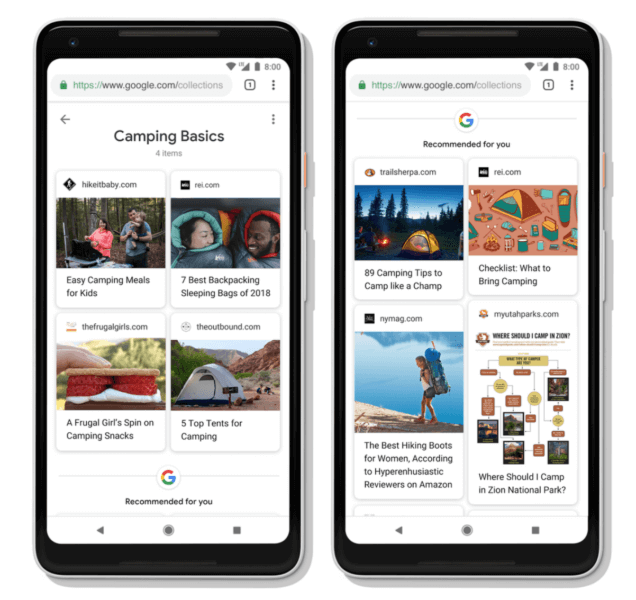Google announces cards, discovery tools, revamped image search at 20th anniversary event

At a surprisingly low-key 20th anniversary and future of search event, Google announced a number of new search features. Some are new, some are expansions or adaptations of existing capabilities, and some are borrowed or “inspired by” competitors’ products (Snap, Instagram, Pinterest).
Ben Gomes, VP of search, led off the event with a brief historical overview of Google’s mission and approach to organizing information. He then introduced conceptual buckets defining the next generation of search capabilities, three “search shifts”:
- From answers to journeys.
- From search queries to queryless discovery.
- From text to visual content.
Personalizing the ‘search journey.’ Years ago, Microsoft determined that search was not a one-off behavior. Its research showed people were typically conducting multiple queries over many sessions to accomplish tasks like finding a job, planning a wedding, buying a car, renting an apartment or planning a vacation. Today, Google echoed that idea in two related search announcements: Activity Cards and improved Collections.
Activity Cards will surface “where you left off in search,” showing you previous pages/sites visited and previous queries. Google says they won’t show up every time or for every query, and users can edit and remove results from the Cards.
The new Collections
Collections already existed, but it’s not clear how many people have been using it. Collections allows users to save and organize content on their phones. The new version of Collections is closely tied to Activity Cards.
Users will be able to save pages to their Collections from Activity Cards. There will also be suggestions of related topics. One can imagine the utility of this for planning and high-consideration shopping (e.g., buying a car, home or major appliance).
Google is also adding what it’s calling a “topic layer” to the knowledge graph. This is what’s behind its growing number of related suggestions. According to Google:
The Topic Layer is built by analyzing all the content that exists on the web for a given topic and develops hundreds and thousands of subtopics. For these subtopics, we can identify the most relevant articles and videos — the ones that have shown themselves to be evergreen and continually useful, as well as fresh content on the topic. We then look at patterns to understand how these subtopics relate to each other, so we can more intelligently surface the type of content you might want to explore next.
Source: https://searchengineland.com
Tags :
Previous Story
- Google’s Touring Bird is a travel tool to...
- Pixel 3: Google sends out invites for Oct....
- Senate Blasts Google Over Missing Election Security Hearing
- Google Chrome’s biggest challenge at age 10 might...
- Malicious Android apps infected with Windows keyloggers pulled...
- Which 2018 flagship phone battery lasts longest? Our...
- Google fined $5b under EU antitrust regulations